Magnolias are trees or shrubs commonly grown for their magnificient blossoms in white, pink, red, purple, and sometimes yellow. Depending on the species or cultivar they can vary from about 10 feet tall to 80 feet tall and often just as wide. Magnolias appear in varied sizes and shapes.
Magnolias include both evergreen and deciduous types. The classic evergreen magnlia is Magnolia grandiflors, the Southern Magnolia. It bears fragrant, giant white flowers with large glossy green leaves. An often planted deciduous magnlia is Magnolia x soulangeana, the saucer magnolia, whose flower can be nearly mistaken for tulips in spring.
Magnolias are often planted as specimens, meaning they are located where their showy flowers and form are easily appreciated. Plant magnolias in open lawn areas, large planting beds, or in groupings. Many magnolias are cold hardy; they will grow as far north as Zone 5. Magnolias have wide spreading roots; they should be located where the roots can not be injured.
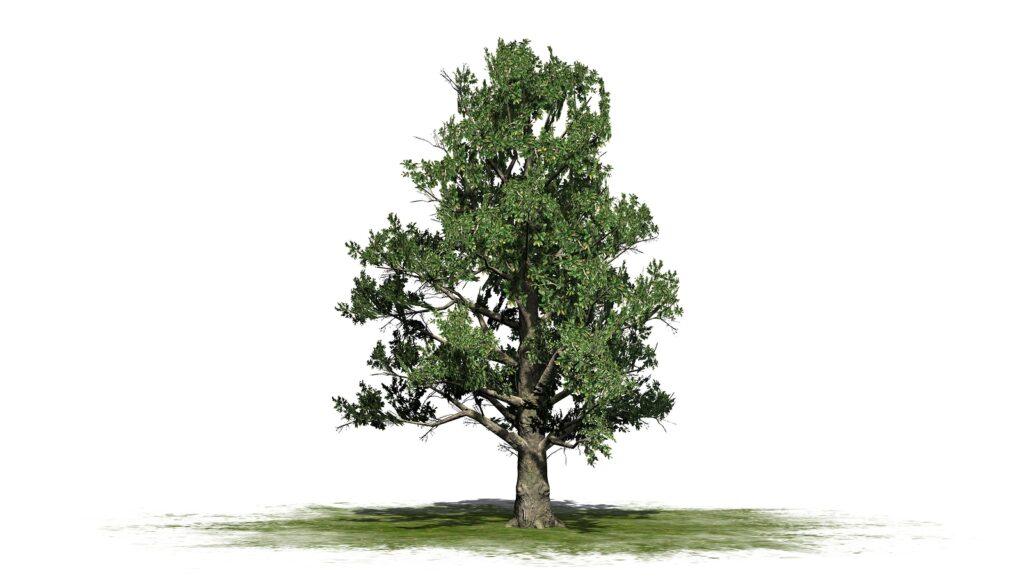
Get to know Magnolias
- Plant type: Large genus of deciduous and evergreen trees and shrub; about 80 to 100 species.
- Growing zones and range: Temperate regions North America and Asia
- Hardiness: Zones 5 to 10 depending on the species or cultivar.
- Height and width: Varies with species
- Flowers: Many petaled flowers with clusters of stamens and pistils in the center
- Fruit: Coblike seedpods with red seeds in autumn
- Bloom time: Asian species usually bloom on bare branches in late winter or early spring. North American species bloom in summer.
- Uses: Specimen or feature plant
- Common name: Magnolia
- Botanical name: Magnolia
- Family name: Magnoliacea
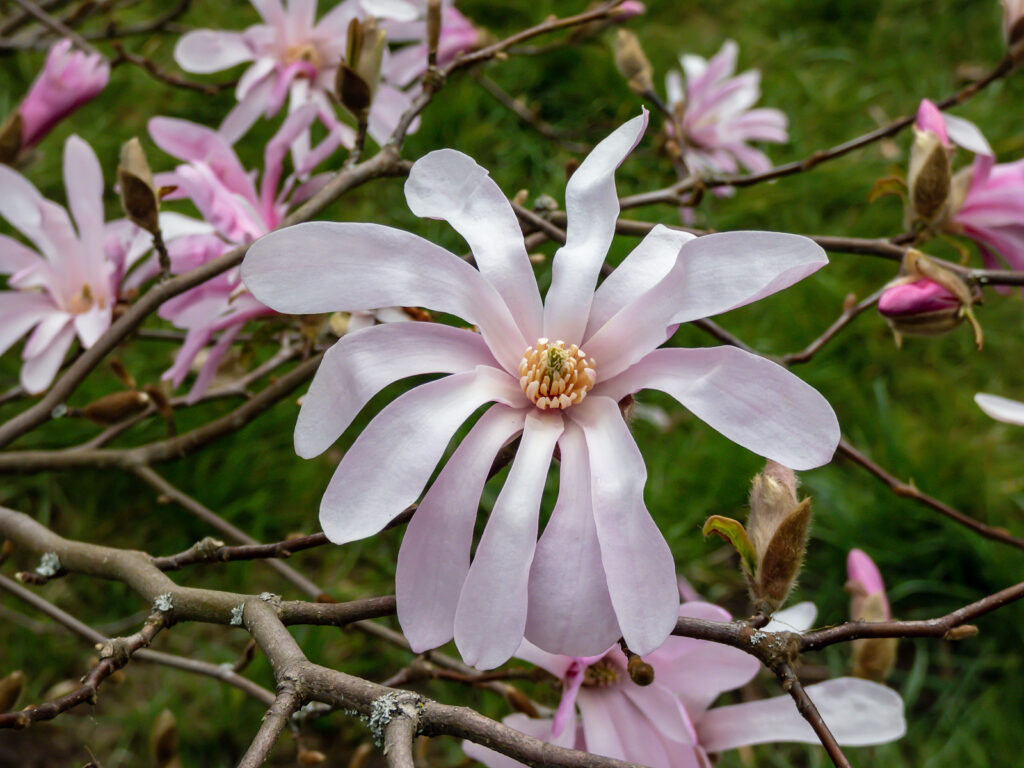
Where to plant Magnolias
- Plant magnolias in full sun to partial shade.
- Plant magnolias in deep, loamy, slightly acid soil.
- Magnolias need plenty of room for roots.
- Early blossoms can be killed by frost; to avoid frost damage, plant magnolias in a cold spot or on the northern side of the house to delay blooms; a southern exposure encourages early blooming.
When to plant Magnolias
- Plant magnolias in spring or autumn.
- Bare-root and container-grown magnolias are best planted in spring or fall.
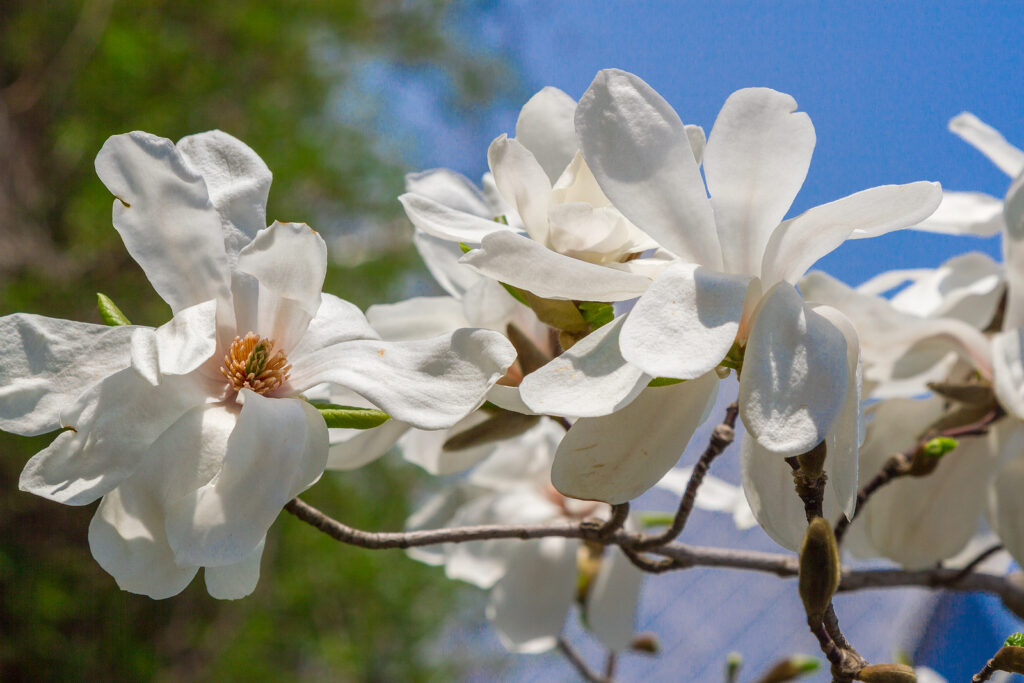
Planting and spacing Magnolias
- Space magnolias according to the mature height and width of the species you are growing. Spacing will vary with species.
- Magnlias are often grown as specimens (for their shape and beauty) so given them plenty of room to be appreciated.
How to water and feed Magnolia
- Mulch around magnolias and water them regularly in summer. Keep the soil just moist.
- Fertilize magnolias with an all-purose fertilizer in spring.
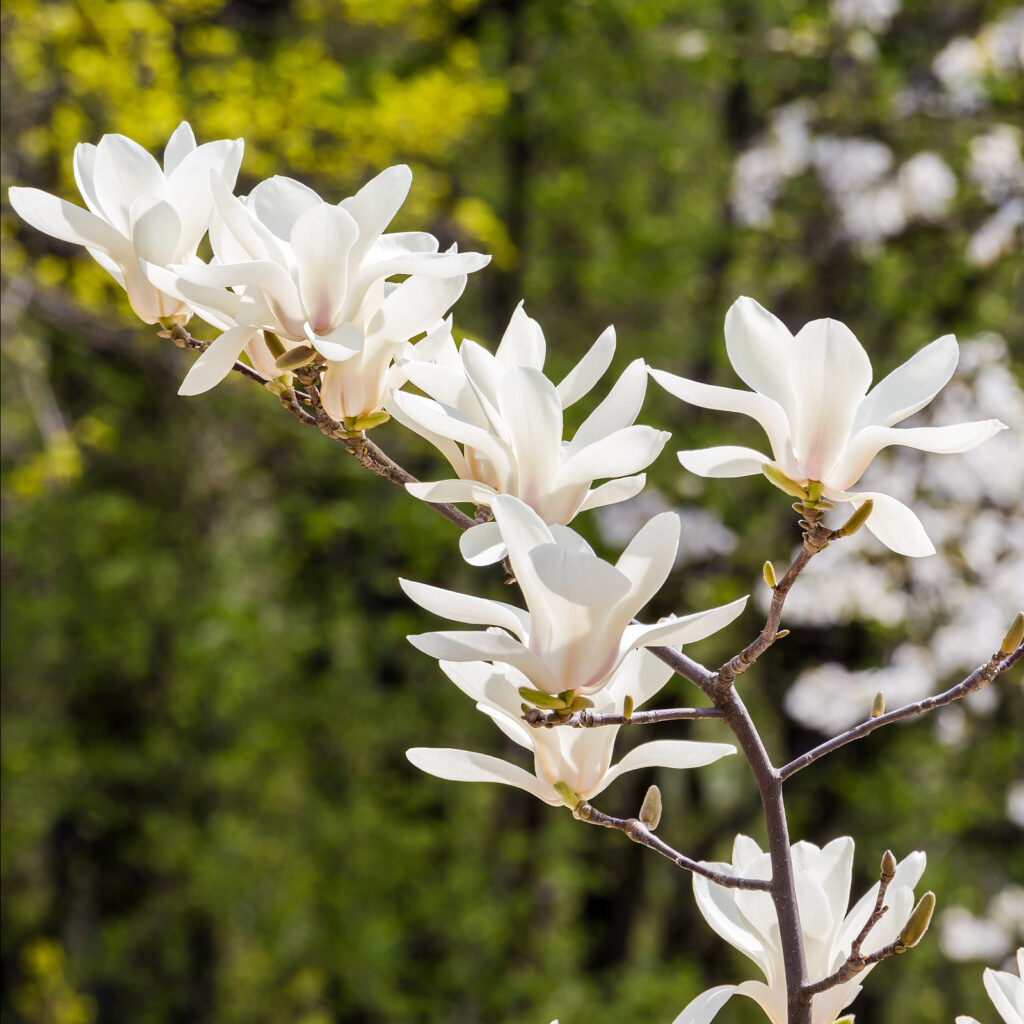
Maganolia care
- Magnolia flower buds are frost sensitive.
- Prune magnolias immediately after blooming if necessary. Magnolias respond well to pruning.
Magnolia pests and diseases
- Magnolias are commonly free of pests and diseases. They can suffer from mildew, leaf spot, and scale.
- They tolerate urban conditons including fumes and grime.
- Frost injury can be a problem where flowers oprn early
Magnolia propagation
- Propagate magnolias from cuttings in summer or from seed in fall or by grafting in winter.
- Magnolias can be difficult to transplant because of the roots are fragile. Container-grown trees are best planted in spring; they will do better than balled-and-burlapped ones.
- Plant balled-and-burlapped or container-grown trees in spring or fall.
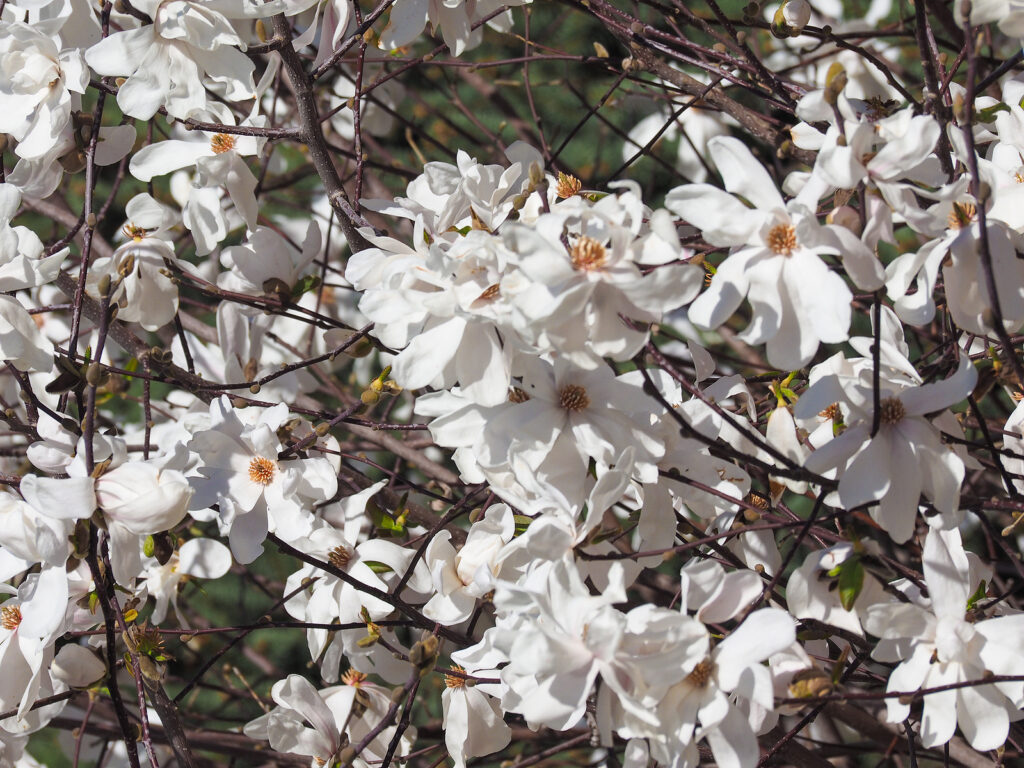
Deciduous Magnolias and cultivars to grow
- M. acuminata, often called cucumber tree: North American native (Zones 4 to 8); tall deciduous tree can grow to 80 feet tall and 60 feet wide; bears greenhish-yellow 3-inch flowers in late spring and early summer. Flowers develop upright green fruits that look like cucumbers and turn pink in autumn. Leaves are heart shaped up to 10 inches wide. Bark is smooth and gray when young; trunk becomes brown with aged. Cold-hardy tree makes an excellent shade tree for lawn or park. Does not tolerate drought or excessive moisture. Cultivars include M.a. var. subcordata (yellow cucumber tree): ‘Golden Glow’ has bright yellow flowers; ‘Elizabeth’ has creamy yellow flowers to 7-inches across; ‘Butterflies’ has 4- to 5-inch butter yellow flowers; ‘Yellow Bird’ has bright yellow flowers.
- M. campbelli, native to Himalayan region (Zones 7-10) grow to 80 feet tall and 40 feet wide; slightly fragrant flowers appear on leafless branches from late winter to early spring.
- M. denudata, commonly called Yulan magnolia, native to China (Zones 6-10); grows to 30 feet tall and wide; bears masses of pure white flowers from mid- to late-spring.
- M. kobus, commonly called Kobus magnolia, native to Japan (Zones 5-9); deciduous, conical speces grow to 30 feet tall; flower with long, narrow petals sometimes pink at the base appear in early spring,
- M. liliiflora, commonly called lily-flowered magnolia; Native to China (Zones 6 to 9): Multi-stemmed magnolia to 12 feet tall and wide; blooms in mid- to late spring (later than most deciduous Asian magnolias); bears 4-inch-wide flowers with slender petals that are white inside and purple outside; leaves are oval and pointed, dark green on top and light green on the undersides. Make a good specimen. Often used to hybridize with other magnolias; cultivars include ‘Nigra’ with deep purple flower; ‘Ann’ with cinnamon-scented, reddish pink flowers; ‘Betty’ with 8-inch purple flowers; ‘Pinkie’ a late bloomer with pastel-pink 6-inch flowers; ‘Ricki’ with petals that are wine-colored on the outside and lavender-pink inside; ‘Susan’ bears slightly twisted reddish-purple flowers.
- M. x loebneri, commonly called Loebner magnolia; hybrid grows best in Zones 4-9; rounded, wider-than-tall tree blooms in early spring; grows to 30 feet tall; blooms profusely producing white or pink flowers with 12-inch strap-shaped petals on bare branches in late winter or early spring. Blooms the same time as Chionodoxa and Scilla siberica.
- M. salicifolia, called Wada’ Memory, grows to 30 feet tall and 20 feet wide; blooms in early to midspring before leaves emerge; white flowers are slightly fragrant.
- M. x soulangeana, commonly called saucer magnolia, a hybrid of M. denudata and M. liliiflora dating to the 1800s; one of the most commonly planted deciduous magnolias; blooms in early spring; low-branched tree grows 20 to 30 feet tall and wide; saucer-shaped 5- to 10-inch blossoms are satiny white, pink, purple, or bicolored petals; dark-green smooth-edged, oblong leaves to 6-inches long; leaves turn golden brown in autumn; fur-covered flower buds in winter; use in a border or lawn or in to shade a patio or sitting area. Blooms along with daffodils.
- M. x stellata, commonly called star magnolia; from Japan (Zones 5 to 9) multi-stemmed, rounded large shrub or small tree grows 15 to 20 feet tall; starry white flowers bloom on bare branches in late winter for early spring. Fragrant 3- to 4-inch-wide flowers have stran-like white or pale pink petals surrounding a yellow enter; dark green, oblong leaves are 2 to 4 inches long; leaves turn yellowish in autumn, Good choice for border or foundation planting; grows well in hot climates.
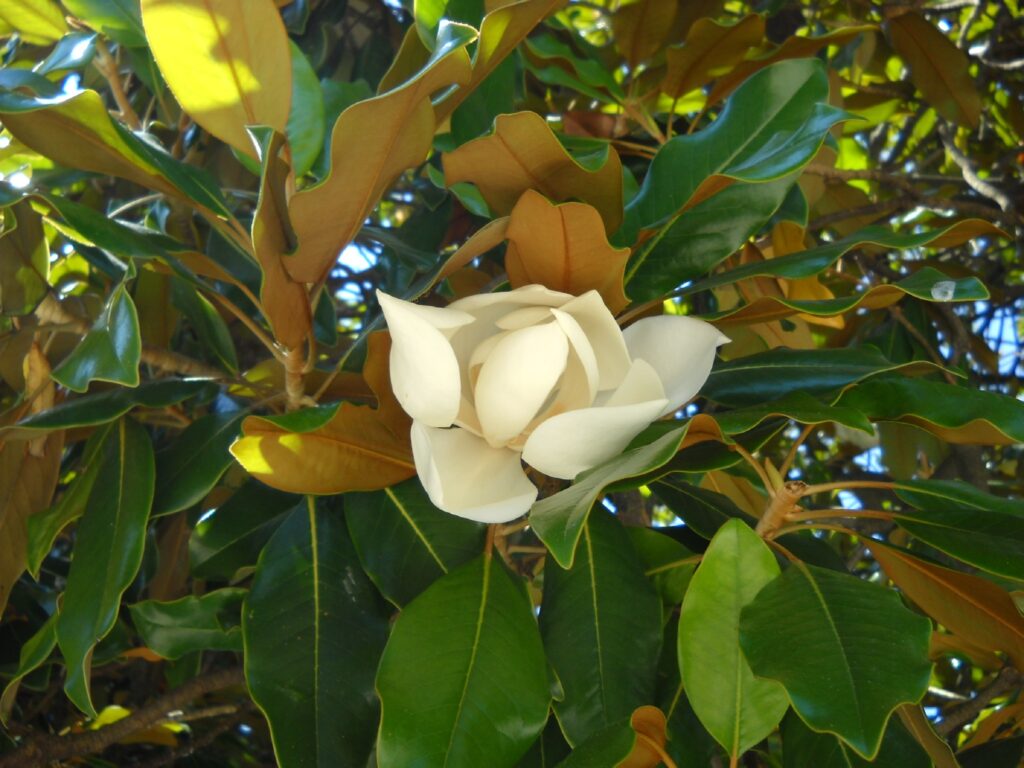
Evergreen Magnolia varieties to grow
- M. grandiflora, commonly called Southern Magnolia; native to southeastern North America (Zones 7 to 9); rounded pyramidal tree grows 60 to 80 feet tall and 30 to 50 feet wide; 4- to 6-inch-long leaves are leathery, oblong and pointed with dense gray or rust-colored fuzz on undersides; blooms in summer large-cup-shaped, creamy white flowers that are 6- to 12-inches wie with a lemony fragrance; 2- to 5-inch beige or red seedpods develop in late summer and fall splitting open to reveal red seeds. Trunk bark is smooth and gray. Plant as a specimen where it has plenty of room to row; tolerates wet site. Cultivars include ‘Little Gem’ that is shrubby and grows to only 20 feet tall; ‘Majestic Beauty’ grow to full size; ‘St. Mary’ is a compact, slow grower to 20 feet with 5-inch flowers; ‘Samuel Sommers’ grows to 30 feet and bears 14-inch wide flowers, cold hardy to Zone 6; ‘Bracken’s Brown Beauty’ grows to 30 feet tall and bears 6-inch flowers and small leaves; ‘Edith Bogue’ is compact and pyramidal growing to 30 feet tall; ‘Victoria’ has broad leaves and grows to 20 feet tall.
- M. virginiana, commonly called Sweet Bay Magnolia, native to southeastern Noryth America (Zones 5 to 9) is shrubby or multi-trunked, open-branches and rounded or oval growing to 50 feet tall; new leaves emerge in spring on green tigs and mature to shiny dark green with white fuzzy underside; lemon-scented, creamy-white flowers are 9 to 12 inches acorss; this is an excellent understory tree in woodland gardens; tolerates wet or swampy sites. Cultivars includ ‘Henry Hick’ which is cold hardy and ‘Willowleaf’ with narrow leaves.















